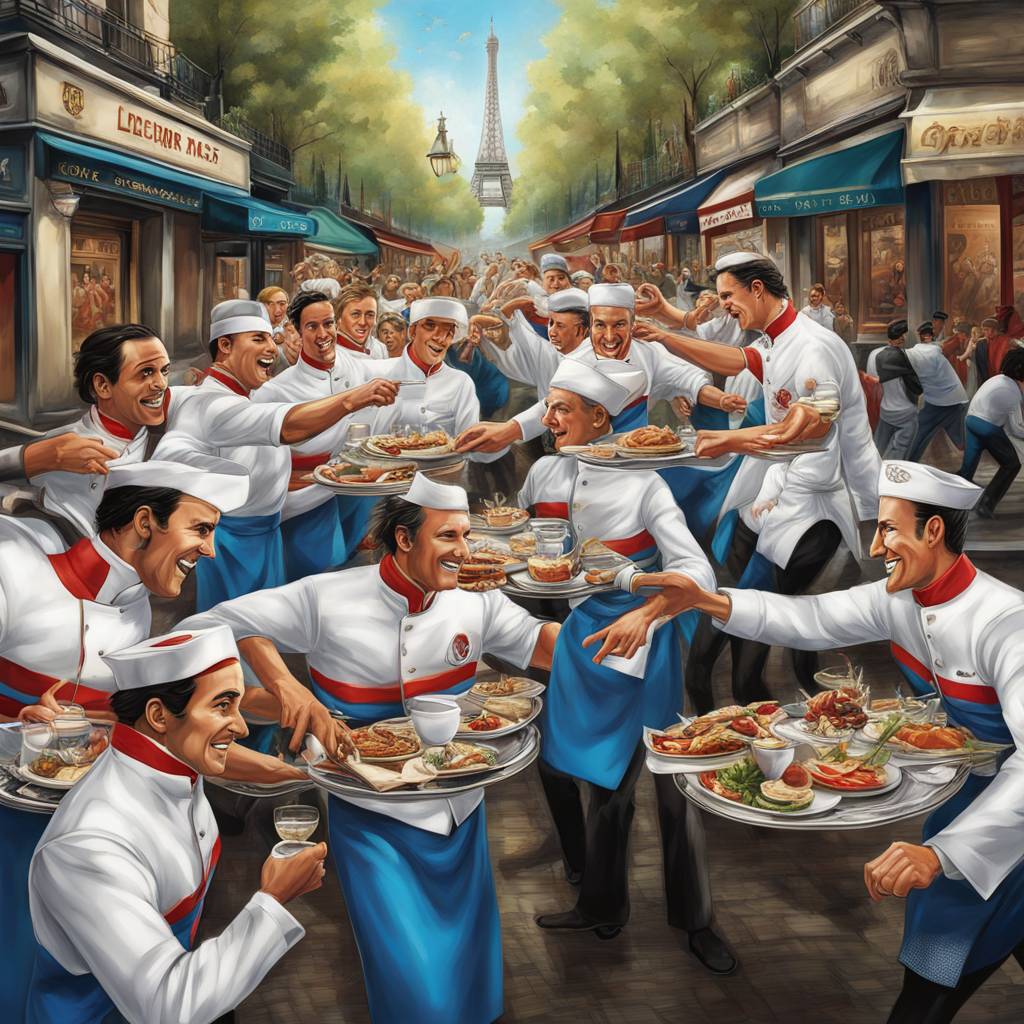Paris revived the annual race of cafe and restaurant waiters after a decade to showcase the vital role that cafes and restaurants play in the cultural heritage of the city. With over 15,000 establishments, Paris is known for its lively dining scene that has persevered despite various challenges, including the pandemic, inflation, and worker shortages. The race, which has been a tradition since the early 20th century, saw around 200 participants racing through the city streets with laden trays, including a croissant, a glass of tap water, and a small coffee cup.
The race attracted a diverse group of competitors, ranging from seasoned veterans from iconic establishments like Les Deux Magots to newcomers and even individuals from different sectors of the service industry. Waiters and service staff pinned numbered bibs to their clothes, and the more experienced waiters were treated like star athletes before a big game. Special prizes, including hotel stays and restaurant meals, were awarded to the top finishers, with additional tickets to the Olympics opening ceremony for the winners in each category.
The course of the race took participants through various iconic locations in Paris, including the Centre Pompidou and the Marais, before looping back to the starting point at Paris City Hall. Waiters walked with intense determination and a touch of chaos as they navigated the course, cheered on by spectators lining the streets. The competitive atmosphere was palpable, with most participants crossing the finish line in 13 to 20 minutes, facing penalties for broken dishes, empty glasses, or lost items along the way.
While the roots of the waiters’ race date back to 1914, the event has evolved over the years, with this year’s competition sponsored by the city’s public water utility to promote sustainable practices in cafes and restaurants. The revival of the race was welcomed by the cafe and restaurant industry, which has weathered challenges such as terrorist attacks, Covid-19 lockdowns, and rising inflation. Marcel Bénézet, president of a service industry trade group, emphasized the importance of showcasing the profession of waiters and highlighting the significance of Parisian cafes in facilitating social interactions.
The waiters and service staff participating in the race had to adhere to specific rules, such as carrying their trays without using both hands and ensuring the water level in the glass did not fall below a certain gauge line to avoid penalties. The dress code for the race included traditional aprons and attire, reflecting the historical context of the event, although modern elements like sneakers were allowed for practicality. Individuals like André Duval, a retired maître d’hôtel, reminisced about the earlier days of the race when waiters carried wine instead of water across the finish line, highlighting the changing dynamics of the event over time.
Overall, the revival of the waiters’ race in Paris served as a celebration of the city’s culinary and cultural landscape, showcasing the endurance and spirit of the service industry in the face of various challenges. Participants came together to partake in a tradition that embodies the essence of Parisian life, where dining in cafes and restaurants contributes to the vibrant tapestry of the city’s social and historical fabric. The race not only honored the heritage of waiters and service staff but also highlighted the role of these establishments in fostering community, connections, and memorable experiences for locals and visitors alike.








